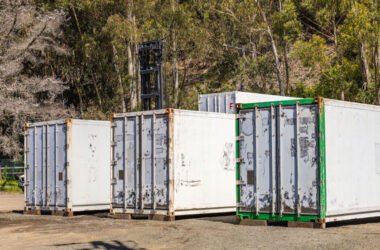You’re standing on the precipice of a massive project—a skyscraper, a luxury development, or a complex commercial space. You know that stunning, photo-realistic visuals are your most potent sales tool, the thing that converts skeptical investors into enthusiastic backers. However, here’s the high-stakes risk: selecting a visualization partner based solely on a visually appealing portfolio is like choosing a mechanic based on the color of their overalls. It feels right, but it tells you nothing about their competence. The challenge lies in moving beyond a studio’s glossy images to critically evaluate the core business metrics: service, speed, and deep technical expertise. A poor hiring decision here is a silent killer, resulting in costly delays, numerous change orders, and ultimately, subpar deliverables that fail to convey your design intent, wasting significant marketing time and capital. Finding the best architectural visualization studios requires rigorous due diligence. We’re here to provide a strategic, structured approach to vendor assessment. The thesis is clear: a meticulous vetting process—one that scrutinizes workflow, technology, and communication—is the single most significant predictor of project success, transforming a partnership with the best 3d visualization companies from a transactional expense into a reliable, competitive business advantage.
Evaluating Core Expertise: Beyond the Portfolio Glamour
It’s completely understandable to feel drawn to the most glamorous images you see. But if you’re serious about high-fidelity project delivery, you need to understand that actual expertise lies far deeper than superficial aesthetics. This is where you put on your business hat. You must critically assess a studio’s actual technical depth and experience across diverse styles and complexities, not just their artistic eye. When sifting through the portfolios of various top 3d rendering companies, look for evidence of conceptual thinking and creative problem-solving; you don’t want a cookie-cutter approach. Does their work show a range of lighting moods and architectural styles? That variety demonstrates adaptability. Crucially, look for a studio with a deep architectural understanding, meaning they genuinely grasp design intent, technical requirements, and industry standards, which is absolutely vital for your high-end projects. Furthermore, explore their longevity and industry recognition. Are they frequently mentioned as the best architectural rendering companies? Checking if they maintain active relationships within the architectural community or have been recognized by peers is an excellent way to filter the contenders.
Technical Capabilities and Software Mastery
The technical foundation is the steel skeleton of any successful rendering project; it is simply non-negotiable for achieving photo-realism. You must ensure that the visualization company uses industry-leading, licensed software (such as V-Ray, Corona, or Unreal Engine—the big hitters) and possesses the necessary skills to leverage their full capabilities. When evaluating the best 3d rendering firms, focus on verifying their ability to handle high-functioning projects that truly test the limits of rendering. We’re talking about scenes with multiple, complex light sources, varied and challenging materials (such as highly reflective glass or intricate wood grain), and large, dense scene environments. The technical team’s skill in 3D modeling and PBR (Physically Based Rendering) texturing is paramount to achieving real-world accuracy—it’s what makes a surface look real, not just colored. Don’t be shy; ask for concrete examples of how they’ve tackled unique technical challenges.
Key areas to vet in a studio’s technical stack include:
- Mastery of advanced light simulation (Global Illumination and Caustics).
- Proficiency in high-resolution texture mapping and displacement mapping.
- Demonstrated experience with large-scale 360-degree views or animations.
- A transparent process for managing and integrating client-provided CAD/BIM data.
The Speed Factor: Managing Timelines and Scalability
Visualization is the throttle on your project’s pace; it’s often the bottleneck preceding marketing launches or construction milestones, making speed and predictable delivery absolutely paramount. You need a partner that doesn’t just promise fast results, but can prove they have the robust pipeline to deliver consistently. This section analyzes how to judge a studio’s capacity and project management efficiency. You need to assess a potential partner’s scalability—their demonstrated ability to handle projects similar to yours in both scope and complexity, and, perhaps more importantly, their capacity to handle multiple concurrent projects without compromising quality standards. Finding the top rendering companies means finding those with organized, streamlined internal workflows rather than a purely linear, wait-your-turn production approach. Ask for typical turnaround times for key milestones, such as the initial draft delivery and the final high-resolution render. How do they handle the sudden demands for the best architectural visualization firms to perform under pressure?
The Revision Process and Quality Control (QC)
A strong rendering project is rarely finished in a single pass; it involves intensive collaboration and iterative refinement, which is totally normal. Therefore, the studio’s Revision Process is a critical indicator of its professionalism and service quality. You should never partner with a team that views revisions as an annoyance. A reliable best 3d architectural visualization company must have stringent, proactive internal Quality Controls (QC) in place to catch those tiny, embarrassing errors before they reach your desk. Crucially, scrutinize their revision policy: how many revisions are included in the price? What is the expected turnaround time for a minor versus a major revision? They must be able to manage your expectations upfront by clearly and transparently conveying potential challenges and delivery times, which actively prevents costly and frustrating scope creep down the line. This shows you they respect your time as much as their own.
Service and Synthesis: Communication, Contract, and Culture
Technical excellence is only half the battle; the top 3d visualization companies combine artistry with exceptional project management and clear client service. This section focuses on the “soft skills” and business framework of the partnership. A great visualizer must also be a great collaborator, dedicated to open communication and a deep understanding of the essence of your design vision. Evaluate how potential partners describe their client communication methods and their willingness to integrate feedback collaboratively. This partnership is a long-term investment, so a transparent, communicative relationship is fundamental to avoiding future misunderstandings and ensuring that the final result perfectly synthesizes your vision with their technical execution. This is the difference between simply hiring architectural CGI companies and finding a true creative partner who elevates your brand.
Transparent Communication and Client Vetting
Before signing that crucial contract, you absolutely must effectively vet the company’s reliability and integrity. Consider this your final layer of security. This sub-section provides actionable steps for assessing trustworthiness. Start by reviewing comprehensive testimonials and seeking references from past clients to gain firsthand insight into their professionalism, reliability, and punctuality. Beyond reviews, you need transparency in legal and contractual matters. Specifically, you must verify who retains ownership of the deliverables and the intellectual property rights upon completion. The contract should also clearly define legal recourse and payment milestones. By establishing clear contracts and expecting transparent, frequent communication, you protect your investment and ensure you are working with the best archviz studios that prioritize partnership over simple transactions.
Conclusion
For any firm looking to elevate its proposals, secure high-value clients, or streamline its marketing pipeline, commissioning a reliable 3D visualization partner is a necessary strategic move—it’s how you signal quality and ambition. The journey to selecting the right best 3d visualization companies demands moving beyond simple visual appeal. You must systematically evaluate the three pillars of a successful partnership: deep technical expertise (verifying mastery of PBR and Global Illumination), reliable speed (insisting on efficient QC and predictable turnaround), and excellent service (demanding transparent communication and clear contracts). This meticulous, business-focused approach transforms the selection process from a high-stakes gamble into a calculated, risk-free decision, ensuring that the final, stunning visuals deliver a powerful, long-term return on your investment and solidify your brand’s competitive edge.










